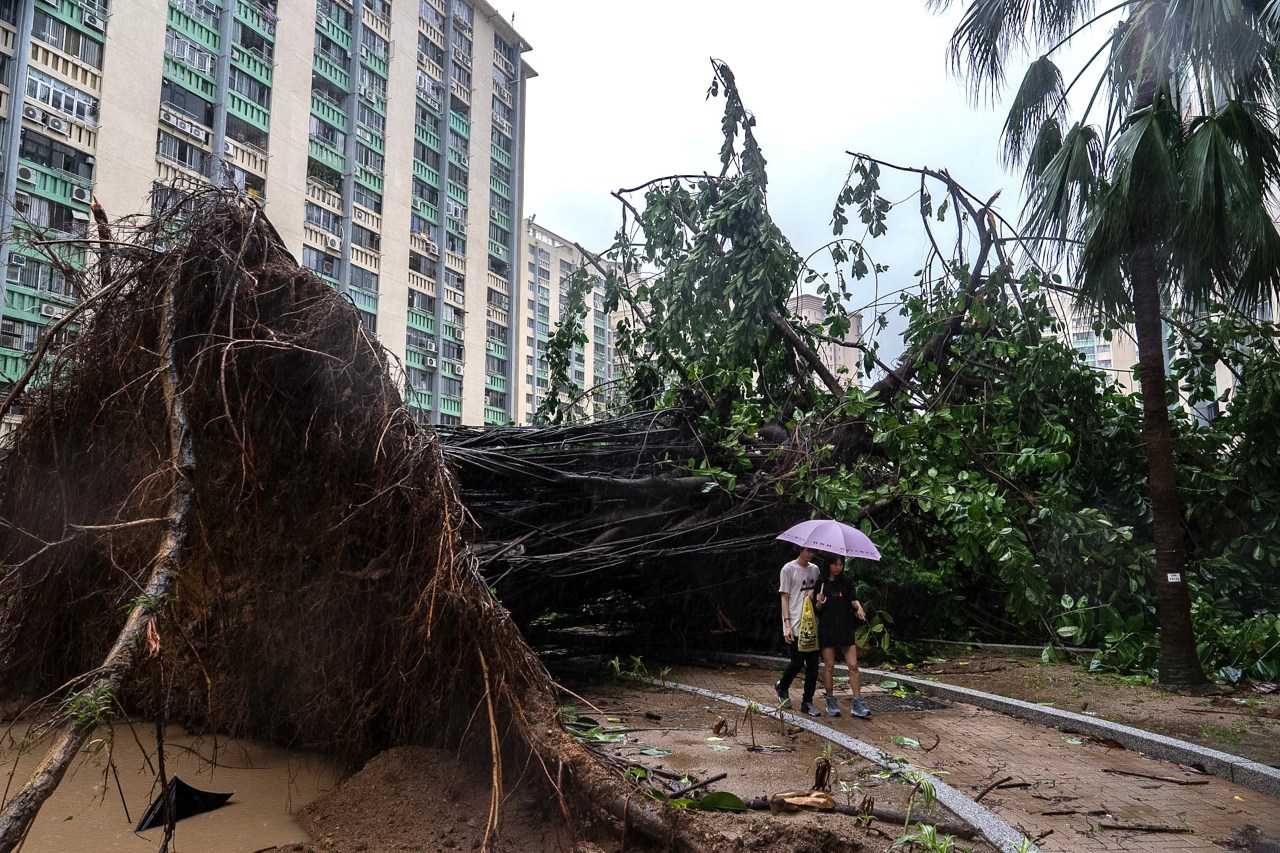Typhoon Ragasa Batters Southern China and Hong Kong After Deadly Impact on Taiwan and the Philippines
SHENZHEN, China (AP) — Typhoon Ragasa, one of the strongest storms to hit Asia in years, whipped waves taller than lampposts onto Hong Kong promenades and churned rough seas along the southern Chinese coast on Wednesday after leaving deadly destruction in Taiwan and the Philippines.
In Taiwan, 17 people died after floods submerged roads and swept away vehicles in Hualien County. Meanwhile, in the northern Philippines, authorities reported 10 deaths, including seven fishermen who drowned when their boat capsized amid huge waves and fierce winds off Santa Ana town in Cagayan province. Five other fishermen remain missing. Nearly 700,000 people were affected in the Philippines, with 25,000 fleeing to government emergency shelters.
Across Guangdong province, a southern Chinese economic powerhouse, nearly 1.9 million people were relocated ahead of the storm. A weather station in Chuandao town recorded maximum gusts of 241 kph (about 150 mph) at noon, marking a record high for Jiangmen city since records began.
State broadcaster CCTV reported that Typhoon Ragasa made landfall along the coast of Hailing Island in Yangjiang city at around 5 p.m., bringing maximum winds near the center of 144 kph (89 mph). Violent winds battered trees and buildings, while torrential rains severely reduced visibility, as captured in video footage from China’s state-run Xinhua news agency.
The typhoon is forecast to continue moving westward, prompting the suspension of some train services in the Guangxi region on Thursday. Chinese officials have allocated tens of millions of dollars for relief efforts. Schools, factories, and transportation services were initially suspended in about a dozen cities, although some farther from the landfall area are beginning to resume normal operations as winds subside.
Winds and Waves Lash Hong Kong, Flooding Promenades
Ragasa’s fierce winds, following its downgrade from a super typhoon, roused Hong Kong residents in the early hours of Wednesday. Many took to social media to describe scenes of a kitchen ventilation fan being blown down and a crane swaying precariously. Strong gusts tore away sections of a pedestrian bridge’s roof and toppled hundreds of trees across the city.
A vessel crashed ashore, smashing a row of glass railings along the waterfront. Flooding affected areas near some rivers and promenades, including cycling lanes and playgrounds. Outdoor furniture at several promenade restaurants was scattered chaotically by the gusty winds.
Hospitals treated 90 people injured during the storm. A video showing waves crashing through a hotel’s doors and flooding its interior quickly went viral in the financial hub, though the hotel has not yet commented on the incident.
In nearby Macao, known for its casinos, schools and flights were canceled, and many shops shuttered. Hundreds of residents sought refuge in temporary shelters as streets turned into flowing streams littered with debris. Rescue crews deployed inflatable boats to rescue trapped individuals, while the local electricity supplier cut power to some flooded, low-lying areas for safety. As the winds waned, some residents waded into flooded streets to catch fish.
According to Hong Kong’s observatory, Ragasa sustained maximum winds near the center of about 195 kph (120 mph) and passed approximately 100 kilometers (62 miles) south of the city. Hong Kong classifies cyclones with sustained winds of 185 kph or stronger as super typhoons to alert residents to extreme weather conditions.
The observatory stated that Ragasa is the strongest tropical cyclone in the northwestern Pacific and South China Sea regions so far this year. Preliminary analysis ranks it as the second-strongest typhoon in the South China Sea region since record-keeping began in 1950, tying with Typhoons Saola in 2023 and Yagi in 2024.
Devastation in Taiwan and Philippines
Before reaching southern China, Ragasa caused severe damage and fatalities in Taiwan and the Philippines. In Taiwan, heavy rains caused a barrier lake in Hualien County to overflow on Tuesday, unleashing torrents of muddy water that destroyed a bridge and transformed roads in Guangfu township into raging rivers. These floods carried away vehicles and furniture, leaving 17 people dead.
Guangfu, home to about 8,450 residents, saw more than half its population seek safety by moving to higher floors or elevated ground on Wednesday morning. Rescue teams re-established contact with over 100 previously unreachable residents in Hualien and continue door-to-door checks for 17 others. A total of 32 people were injured across Taiwan.
In the northern Philippines, officials confirmed at least 10 fatalities, including the lost fishermen, with hundreds of thousands affected by the storm’s impact.
___
Leung reported from Hong Kong. Associated Press journalists Jim Gomez in Manila, Philippines, and Johnson Lai in Taipei, Taiwan, contributed to this report.


